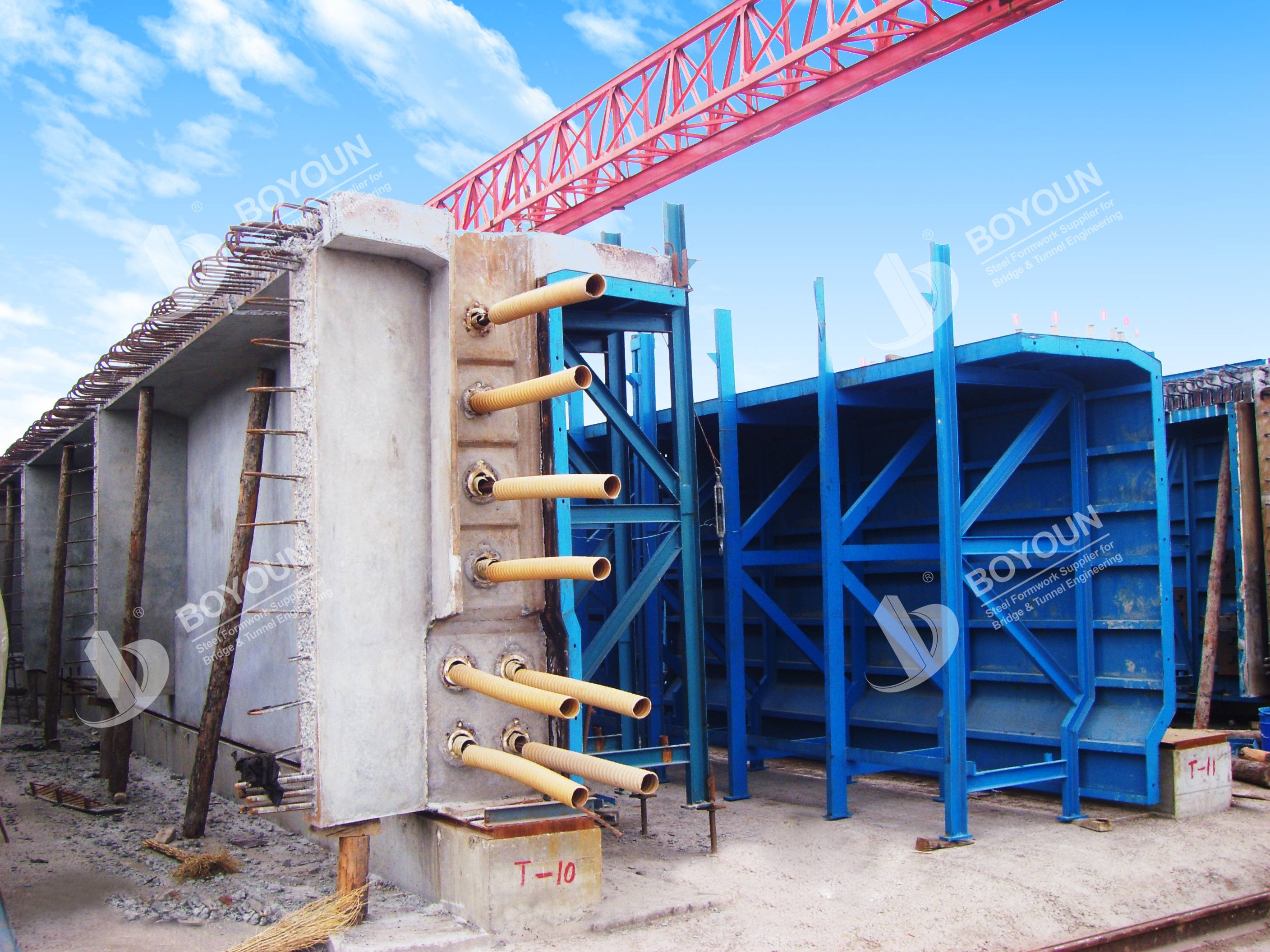During the construction of precast concrete T-beams, various factors can lead to appearance quality problems. Due to the inability to achieve ideal external environmental conditions during T-beam construction, it is inevitable to have concrete appearance quality issues. This article will provide a comprehensive overview of four common appearance quality issues with precast concrete T-beams.

In general, shrinkage cracks are more likely to occur at the web connection, the bottom of the flange, the lifting hole, and the top of the flange of the T-beam. Shrinkage cracks have irregular shapes and may expand in response to factors such as humidity or temperature.
There are three main causes of shrinkage cracks. Firstly, the water-cement ratio of the concrete is relatively large, which is affected by excessive shrinkage, leading to cracking during the curing and hardening of the concrete. Secondly, excessive vibration during construction causes bleeding and surface shrinkage, resulting in cracks. Third, improper and insufficient curing treatment in the later stage causes rapid moisture loss on the concrete surface, combined with insufficient replenishment of surface moisture, leading to cracks.
If roughness, sand streaks, or a lack of mortar appear on the surface of the concrete, it is called honeycomb. Honeycombs are typically small concave points with a diameter usually within 5mm and they are distributed irregularly and unevenly. However, honeycomb problems do not lead to exposed reinforcement. Generally, honeycombs are found in the root of the flange, the chamfer of the horseshoe slope, and the web and edges of the T-girder.
The formation of honeycombs is mainly due to five reasons. Firstly, there is insufficient space for vibration on the web and areas with dense reinforcement and the chamfer of the horseshoe slope, resulting in insufficient vibration and the inability to remove air bubbles, resulting in bubbles on the surface of the formwork and the appearance of the formwork and the appearance of irregular honeycomb points. Secondly, the formwork is not moistened with water or the surface of the formwork is too rough, resulting in water loss on the formwork after pouring, which leads to the formation of honeycombs when the formwork is removed. Third, the formwork release agent is not evenly applied or there are areas where it is not applied. Fourth, during concrete pouring, the speed is too fast and the layering is too thick, which affects the air bubble discharge. Fifth, there is a long gap between each process and the formwork is contaminated or the release agent fails during the interval.
Layer marking problems are usually found in the web and horseshoe parts of the T-beam.
The reason for the occurrence of layers is mainly due to the long pouring of the lower concrete layer before the upper layer. The lower layer of concrete will be in an initial curing state for a time after pouring, making it difficult to achieve good connection when the upper layer is poured, resulting in layer markings. Another possibility is that during the pouring of concrete, it is affected by differences in specific gravity, causing coarse aggregates to sink and cement mortar to float. Currently, the vibration intensity is strong, resulting in a lot of mortar on the upper layer and a darker color, with more aggregates on the lower part and lighter color.
The color difference problem refers to the uneven color on the surface of the concrete, or the presence of scale-like patterns and black-and-white spots with varying depths. The color difference issue is quite common in precast concrete T-beam projects.
The cause of this problem is mainly due to three factors. Firstly, the concrete mixing work is not performed in accordance with the standards, which can lead to various issues such as insufficient and uneven mixing, failure to meet quality standards, excessive water-cement ratio, and poor slurry formation state. Due to uneven mixing, coarse aggregates accumulate, causing uneven dark and light spots. Secondly, before pouring concrete, the attachments are adhered to the inner surface of the formwork, and these attachments are not cleaned in a timely and thorough manner. They will adhere to the surface of the concrete during pouring and leave spots on the concrete surface after the formwork is removed. Third, if the the concrete slump is too small and there is insufficient vibration, the upper layer of concrete will be disturbed by the weight of the upper layer, causing secondary settlement, resulting in fish scales patterns.
The quality of concrete is directly reflected in its appearance. Therefore, the importance of good concrete appearance quality is evident in practical projects. In fact, concrete appearance quality problems occur in many engineering projects and the types of defects in the appearance quality of precast concrete T-beams are numerous, and the inducing factors are not singular. Furthermore, the above-mentioned problems will also have a certain impact on the strength and durability of the concrete structure of the T-beam. Therefore, relevant construction technicians must strictly control the quality of concrete construction and adopt scientific and reasonable methods for prevention and treatment to ensure that the T-beam project meets the quality standards. In the next article, we will propose specific improvement measures for the four common appearance quality problems of precast concrete T girder. Please stay tuned for our updates.

International Department: Room 2211-2212, Tower C of Wanda Plaza, Tongzhou District, Beijing 101118, China.
+86-13021287080
info@boyoun.cn